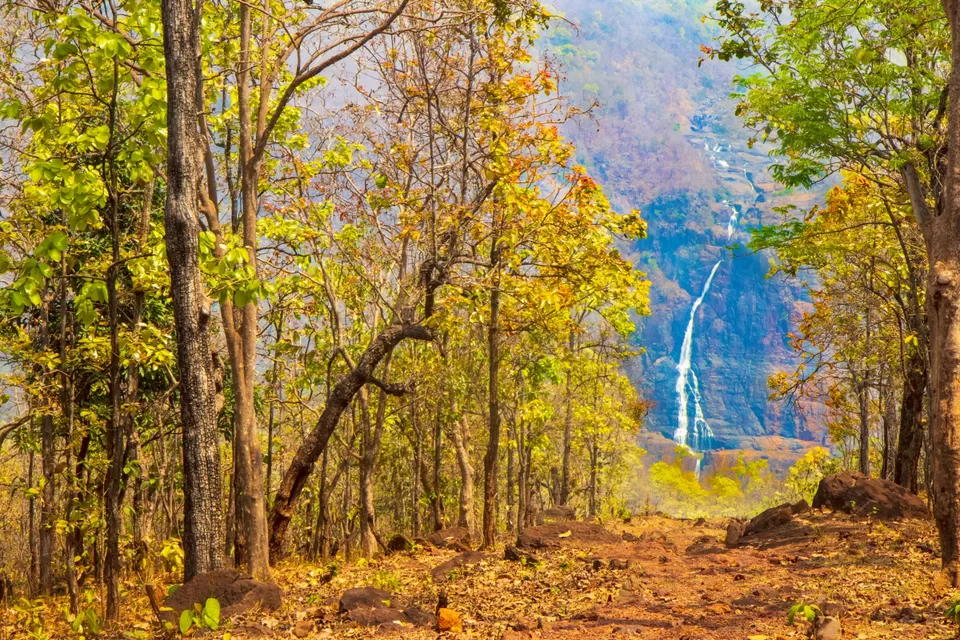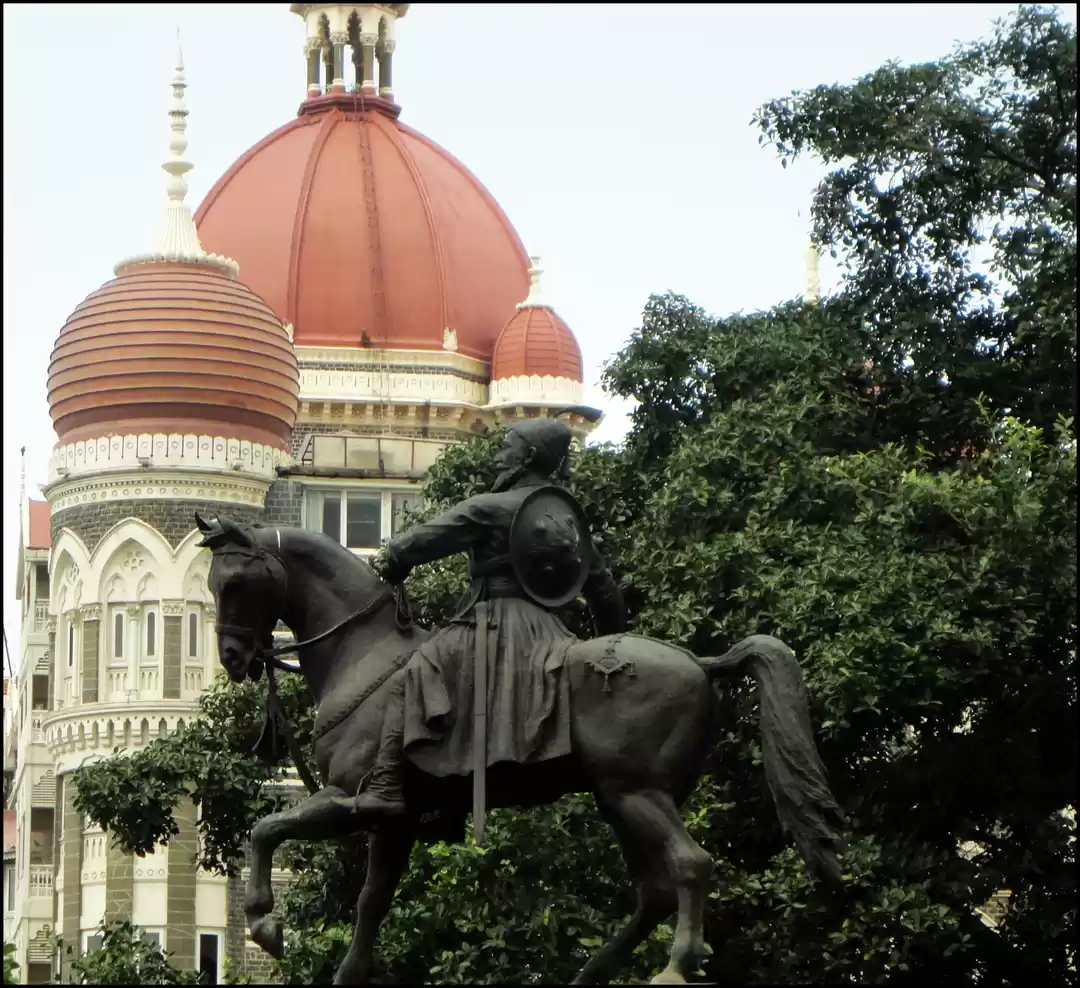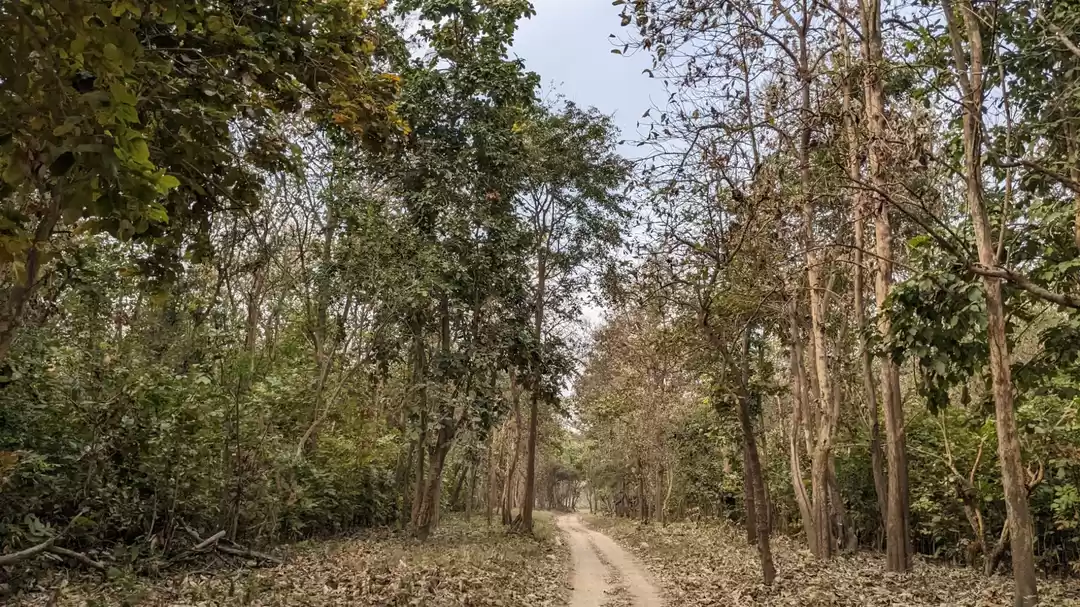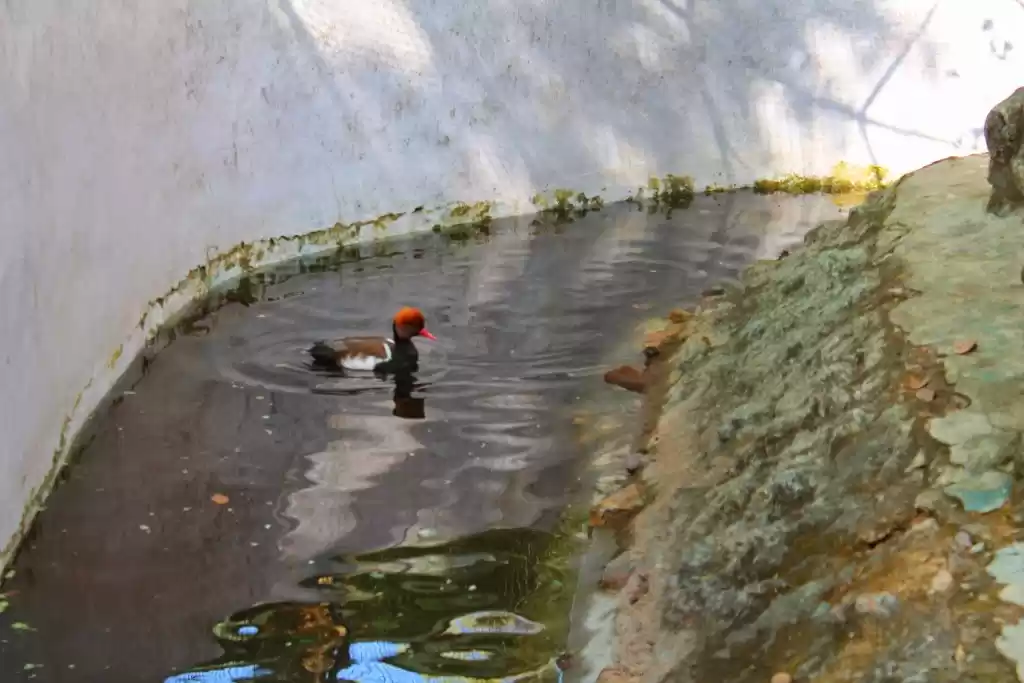Have you ever dreamed of visiting a place where you can witness the beauty and diversity of nature, wildlife, and culture in one destination? If yes, then Simlipal National Park is the perfect place for you. Simlipal National Park is one of the largest and most diverse wildlife sanctuaries in India and one of the principal tiger projects in India. It is located in the Mayurbhanj district of Odisha, covering an area of 2,750 square kilometers. It is also a part of the Simlipal Biosphere Reserve, a UNESCO World Heritage Site, and a Project Tiger Reserve.

Simlipal National Park is home to a rich variety of flora and fauna, including some rare and endangered species. It boasts of dense forests, meadows, waterfalls, rivers, hills, and valleys that offer stunning views and scenic landscapes. It also hosts a vibrant tribal culture that adds to its charm and uniqueness. Whether you are looking for adventure, relaxation, education, or exploration, Simlipal National Park has something for everyone.
In this article, we will provide you with a complete guide to Simlipal National Park, its history, biodiversity, attractions, activities, accommodation, and travel tips. We will also share some interesting facts and tips that will make your trip to Simlipal National Park more enjoyable and memorable.
So, read on and discover why Simlipal National Park should be your next destination.
History and Evolution of Simlipal National Park
Simlipal National Park derives its name from the abundance of red silk cotton trees (simul) that bloom in the park. The park was originally the hunting ground of the Mayurbhanj royal family until it was declared a wildlife sanctuary in 1979. In 1980, it became a part of the Project Tiger scheme to protect and conserve the tiger population in India. In 1986, it was upgraded to a national park status. In 1994, it was included in the Simlipal Biosphere Reserve, which covers an area of 5,569 square kilometers and encompasses three wildlife sanctuaries: Simlipal Tiger Reserve, Hadgarh Wildlife Sanctuary, and Kuldiha Wildlife Sanctuary. In 2009, it was recognized as a UNESCO World Heritage Site under the category of natural sites.
Simlipal National Park has been instrumental in preserving and promoting the biodiversity and ecology of the region. It has also been involved in various conservation initiatives and research projects to protect and enhance its natural resources and wildlife. Some of the achievements and awards that Simlipal National Park has received for its conservation efforts are:
- It is one of the nine biosphere reserves in India that are part of the World Network of Biosphere Reserves.
- It is one of the 18 biosphere reserves in India that are recognized by UNESCO’s Man and Biosphere Programme.
- It is one of the 50 tiger reserves in India that are supported by the National Tiger Conservation Authority.
- It is one of the 17 mega biodiversity hotspots in India that are identified by Conservation International.
- It is one of the three sites in India that are selected for the Global Tiger Recovery Program by the World Bank.
- It is one of the four sites in India that are chosen for the Integrated Development of Wildlife Habitats by the Ministry of Environment and Forests.
- It is one of the two sites in India that are selected for the Conservation Assured | Tiger Standards (CA|TS) accreditation by WWF-India.
Also Read: 10 Unmissable Places of Interest in Odisha
Biodiversity and Fauna of Simlipal National Park
Simlipal National Park is a treasure trove of biodiversity and fauna. It has more than 1,200 species of plants, including 94 species of orchids, and more than 500 species of animals, including 55 species of mammals, 304 species of birds, 60 species of reptiles, 21 species of amphibians, 38 species of fish, and 164 species of butterflies. It also has some endemic and endangered species that are unique to Simlipal National Park or found only in a few places in India.
Some of the prominent flora species that can be found in Simlipal National Park are:
Red silk cotton tree (simul): This is the signature tree of Simlipal National Park that gives it its name. It has bright red flowers that attract various birds and insects.
Sal: This is the dominant tree species in Simlipal National Park that forms the majority of the forest cover. It has dark green leaves and brown fruits that are edible and medicinal.
Mahua: This is another important tree species in Simlipal National Park that has multiple uses. It has white flowers that are used to make liquor and oil, and yellow fruits that are eaten by humans and animals.
Kendu: This is a valuable tree species in Simlipal National Park that has economic and cultural significance. It has green leaves that are used to make bidis (Indian cigarettes), and red berries that are used to make dye and ink.
Orchids: Simlipal National Park has a rich collection of orchids, including some rare and exotic varieties. Some of the orchid species that can be seen in Simlipal National Park are Vanda tessellata, Dendrobium nobile, Cymbidium aloifolium, and Aerides odorata.
Some of the prominent fauna species that can be found in Simlipal National Park are:
Tiger: This is the flagship species of Simlipal National Park and the main attraction for visitors. Simlipal National Park has one of the highest densities of tigers in India, with an estimated population of 95 individuals. The tigers in Simlipal National Park are known for their unique black stripes and large size.
Elephant: This is another majestic species of Simlipal National Park and the second largest land mammal in the world. Simlipal National Park has a healthy population of elephants, with an estimated number of 572 individuals. The elephants in Simlipal National Park are known for their intelligence and social behavior.
Leopard: This is another elusive species of Simlipal National Park and the most adaptable of the big cats. Simlipal National Park has a good population of leopards, with an estimated number of 55 individuals. The leopards in Simlipal National Park are known for their agility and stealth.
Bison: This is another impressive species of Simlipal National Park and the largest bovine in the world. Simlipal National Park has a sizable population of bison, with an estimated number of 432 individuals. The bison in Simlipal National Park are known for their strength and endurance.
Sambar: This is another common species of Simlipal National Park and the largest deer in India. Simlipal National Park has a large population of sambar, with an estimated number of 3,064 individuals. The sambar in Simlipal National Park are known for their antlers and vocalizations.
Deer: Simlipal National Park has several species of deer, such as spotted deer, barking deer, and mouse deer. They are the main prey base for the predators in the park. They are also the most visible and abundant herbivores in the park.
Monkeys: Simlipal National Park has two species of monkeys, namely rhesus macaque and gray langur. They are the most intelligent and social animals in the park. They are also the most mischievous and noisy animals in the park.
Bears: Simlipal National Park has two species of bears, namely sloth bear and Asiatic black bear. They are the most nocturnal and secretive animals in the park. They are also the most omnivorous and opportunistic animals in the park.
Crocodiles: Simlipal National Park has two species of crocodiles, namely mugger crocodile and gharial. They are the most aquatic and ancient animals in the park. They are also the most dangerous and feared animals in the park.
Snakes: Simlipal National Park has a rich diversity of snakes, including some venomous and non-venomous species. Some of the snake species that can be seen in Simlipal National Park are king cobra, python, krait, viper, and rat snake. They are the most cold-blooded and slithering animals in the park.
Turtles: Simlipal National Park has a few species of turtles, such as Indian flapshell turtle, Indian roofed turtle, and Indian softshell turtle. They are the most hard-shelled and slow-moving animals in the park. They are also the most long-lived and endangered animals in the park.
Birds: Simlipal National Park has a remarkable variety of birds, including some migratory and resident species. Some of the bird species that can be spotted in Simlipal National Park are hornbill, peacock, parakeet, woodpecker, owl, eagle, kingfisher, and sunbird. They are the most colorful and melodious animals in the park.
Reptiles: Simlipal National Park has a few other reptiles, such as lizards, geckos, skinks, and monitor lizards. They are the most scaly and adaptable animals in the park. They are also the most diverse and fascinating animals in the park.
Butterflies: Simlipal National Park has a splendid collection of butterflies, including some rare and beautiful varieties. Some of the butterfly species that can be admired in Simlipal National Park are blue mormon, common rose, common emigrant, common jezebel, and common tiger. They are the most delicate and graceful animals in the park.
Read Apurba's Journey to Similipal for waterfall, mountain, forest and wilderness

Attractions and Activities in Simlipal National Park
Simlipal National Park is not only a wildlife sanctuary but also a tourist destination that offers various attractions and activities for visitors to enjoy. Whether you want to experience nature, adventure, culture, or relaxation, you will find something to suit your taste and preference in Simlipal National Park.
Some of the attractions and activities that you can explore in Simlipal National Park are:
Waterfalls: Simlipal National Park has several waterfalls that add to its beauty and charm. Some of the waterfalls that you can visit in Simlipal National Park are Joranda Falls, Barehipani Falls, Deokund Falls, Sitakund Falls, and Nandakanan Falls. These waterfalls offer spectacular views and soothing sounds that will refresh your senses.
Rivers: Simlipal National Park has several rivers that flow through its landscape. Some of the rivers that you can see in Simlipal National Park are Khairi River, Budhabalanga River, Salandi River, Palpala River, and Deo River. These rivers provide water and habitat for various aquatic animals and plants.
Hills: Simlipal National Park has several hills that rise above its terrain. Some of the hills that you can climb in Simlipal National Park are Meghasani Hill, Khairiburu Hill, Uski Hill, Chakradhara Hill, and Gudgudia Hill. These hills offer panoramic views and challenging trails that will test your stamina and skills.
Forests: Simlipal National Park has several forests that cover its area. Some of the forests that you can explore in Simlipal National Park are Chahala Forest, Jashipur Forest, Kuldiha Forest, Lulung Forest, and Nawana Forest. These forests provide shelter and food for various terrestrial animals and plants.
Wildlife safari: This is one of the most popular and exciting activities that you can do in Simlipal National Park. You can book a jeep or a bus and go on a guided tour of the park to see the wildlife in their natural habitat. You can also opt for a night safari to see the nocturnal animals in action. You can also choose a specific zone or route to focus on your preferred wildlife species.
Trekking: This is another adventurous and thrilling activity that you can do in Simlipal National Park. You can hire a guide and go on a trekking expedition to explore the park on foot. You can also camp at designated sites and enjoy the wilderness and solitude. You can also select a specific trail or circuit to suit your level and interest.
Camping: This is another fun and relaxing activity that you can do in Simlipal National Park. You can pitch a tent and stay overnight at one of the nature camps or forest rest houses in the park. You can also enjoy a bonfire and a barbecue and mingle with other campers. You can also experience the starry sky and the sounds of nature at night.
Birdwatching: This is another enjoyable and educational activity that you can do in Simlipal National Park. You can bring a pair of binoculars and a bird guide and go on a birdwatching tour of the park. You can also join a group or a club and learn from experts and enthusiasts. You can also spot some rare and exotic birds in the park.
Photography: This is another creative and rewarding activity that you can do in Simlipal National Park. You can bring your camera and capture the beauty and diversity of the park. You can also participate in contests or exhibitions and showcase your talent and passion. You can also take some memorable photos with your friends and family in the park.
Cultural programs: This is another interesting and enriching activity that you can do in Simlipal National Park. You can watch some cultural programs performed by the local tribal communities in the park. You can also learn about their history, culture, traditions, and lifestyle. You can also interact with them and exchange views and experiences.
Accommodation and Facilities in Simlipal National Park
Simlipal National Park has various accommodation options for visitors to stay comfortably and conveniently in the park. Whether you are looking for luxury, budget, or eco-friendly accommodation, you will find something to match your needs and expectations in Simlipal National Park.
Some of the accommodation options that you can choose from in Simlipal National Park are:
Nature camps: These are eco-friendly cottages or tents that are located near some of the attractions or activities in the park. They offer basic amenities such as beds, toilets, electricity, water, etc. They also offer facilities such as dining, parking, security, etc. They are ideal for nature lovers, adventure seekers, and budget travelers.
Forest rest houses: These are government-run guest houses that are situated inside or outside the park. They offer standard amenities such as rooms, bathrooms, fans, lights, etc. They also offer facilities such as dining, parking, security, etc. They are suitable for families, groups, and regular travelers.
Eco cottages: These are private-run cottages that are built with eco-friendly materials and techniques. They offer modern amenities such as AC, TV, fridge, etc. They also offer facilities such as dining, parking, security, etc. They are perfect for couples, honeymooners, and luxury travelers.
Dormitories: These are large halls or rooms that have multiple beds or mattresses for visitors to sleep together. They offer minimal amenities such as toilets, water, etc. They also offer facilities such as dining, parking, security, etc. They are best for students, backpackers, and solo travelers.
Some of the best accommodation options in Simlipal National Park are:
Gurguria Nature Camp: This is a nature camp that is located near the Gurguria entrance gate of the park. It has 10 cottages that can accommodate up to 20 people each. It charges Rs 1,500 per person per night (including food). It offers facilities such as dining hall, parking area, watch tower, and bonfire pit.
Jamuani Nature Camp: This is another nature camp that is located near the JamJamuani Nature Camp: This is another nature camp that is located near the Jamuani entrance gate of the park. It has 12 cottages that can accommodate up to 24 people each. It charges Rs 2,000 per person per night (including food). It offers facilities such as dining hall, parking area, watch tower, and bonfire pit.
Chahala Forest Rest House: This is a forest rest house that is located inside the Chahala zone of the park. It has 4 rooms that can accommodate up to 8 people each. It charges Rs 1,000 per person per night (excluding food). It offers facilities such as dining hall, parking area, watch tower, and generator.
Kumari Eco Cottage: This is an eco cottage that is located outside the park near the Kumari entrance gate. It has 6 cottages that can accommodate up to 12 people each. It charges Rs 3,000 per person per night (including food). It offers facilities such as AC, TV, fridge, dining hall, parking area, and garden.
Lulung Dormitory: This is a dormitory that is located outside the park near the Lulung entrance gate. It has 2 halls that can accommodate up to 40 people each. It charges Rs 500 per person per night (excluding food). It offers facilities such as toilets, water, dining hall, parking area, and security.
Here are Seven amazing getaways in Odisha for the wildlife enthusiast
Travel Tips and Advice for Visiting Simlipal National Park
Simlipal National Park is a wonderful place to visit, but it also requires some planning and preparation to make your trip smooth and hassle-free. Here are some travel tips and advice that will help you enjoy your visit to Simlipal National Park:
Best time to visit: The best time to visit Simlipal National Park is from October to June, when the weather is pleasant and suitable for wildlife viewing. The park remains closed from July to September due to heavy rains and floods.
Entry fee: The entry fee for Simlipal National Park is Rs 40 per person for Indians and Rs 1,000 per person for foreigners. The entry fee for vehicles is Rs 200 for two-wheelers, Rs 300 for four-wheelers, and Rs 500 for buses. The entry fee for cameras is Rs 100 for still cameras and Rs 500 for video cameras.
Planning a trip: You can plan your trip to Simlipal National Park by booking your accommodation and activities online through the official website of Simlipal Tiger Reserve or through a registered tour operator. You can also contact the park authorities or staff for any queries or information.
What to expect inside: You can expect to see a variety of wildlife, plants, and landscapes in Simlipal National Park. You can also expect to experience some adventure, culture, and relaxation in the park. You can also expect to follow some rules and regulations in the park, such as wearing masks, maintaining social distance, carrying valid identity proof, obtaining permits, following guides, respecting wildlife and nature, etc.
What to carry: You should carry some essential items for your trip to Simlipal National Park, such as comfortable clothes and shoes, water and snacks, binoculars and camera, sunscreen and insect repellent, first aid kit and medicines, flashlight and batteries, etc.
What to avoid: You should avoid some things that can spoil your trip to Simlipal National Park, such as littering and noise pollution, feeding and teasing animals, venturing off the trails or into restricted areas, smoking and drinking alcohol, wearing bright or flashy colors, etc.
Conclusion
Simlipal National Park is a must-visit destination for nature and wildlife lovers. It offers a unique opportunity to witness the beauty and diversity of nature, wildlife, and culture in one place. It also offers a chance to learn about conservation and ecology in a fun and interactive way. Whether you are looking for a day trip or a weekend getaway, Simlipal National Park will not disappoint you.
So, what are you waiting for? Book your trip to Simlipal National Park today and experience the wonders of this amazing park.
Happy traveling!

























